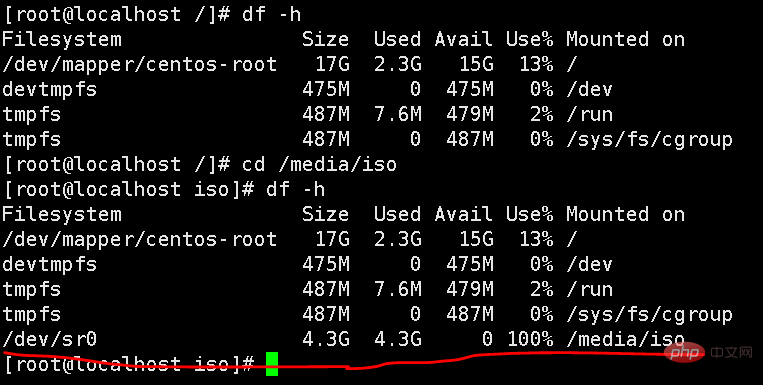Home >Operation and Maintenance >Linux Operation and Maintenance >what is linux autofs
autofs is a Linux system daemon that automatically mounts the file system when it detects that the user is trying to access a file system that has not yet been mounted. After filling the information into the /etc/fstab file, the system will automatically mount it every time it is powered on, while the autofs service program will be dynamically mounted when the user needs to use the file system, thereby saving network resources and The overhead of server hardware resources.

#The operating environment of this tutorial: linux7.3 system, Dell G3 computer.
When we use Linux, if we want to access hardware resources, we need to use the mount command to mount the hardware resources and correspond to a directory, and then we can Access the storage medium. If you use samba or NFS service, you also need to mount the remote storage device. Mounting is a necessary step when using external storage media or file systems. However, if too many resources are mounted, it will cause a certain load on network resources and server resources, thereby reducing server performance.
In order to solve this problem, we can use the autofs service. Autofs is a system daemon. We can write the mounting information into its configuration file. If the user does not access other storage media, the system No mounting will be performed. If the user attempts to access the storage medium, autofs will automatically perform the mounting operation. All the above operations are transparent to the user. In this way, the autofs service saves the server's network and hardware resources.
The autofs service program is a Linux system daemon process that automatically mounts the file system when it detects that the user is trying to access a file system that has not been mounted. After filling the information into the /etc/fstab file, the system will automatically mount it every time it is powered on, while the autofs service program will be dynamically mounted when the user needs to use the file system, thereby saving network resources and The overhead of server hardware resources.
Autofs is very convenient. There are two main points:
1) Set the directory that does not necessarily need to be mounted when booting. Implement automatic mounting.
2) If the user does not use the automatically mounted directory for a period of time, it will be automatically uninstalled. (The default time is 5 minutes)
autofs can be installed using yum, the installation command is as follows:
yum install -y autofs
The main configuration file of the autofs service is /etc/auto.master. After opening, you need to write the format in the main configuration file:
Sub-configuration file of the destination mounting directory mounting directory
For example If we want to mount /dev/cdrom to the /mnt directory, we need to write the following content:

The red line is the newly written content.
Then create the /etc/cdrom.misc file and write the following content:
iso -fstype=iso9600,defaults :/dec/cdrom
Among them, iso represents the sub-mount directory under this directory. After completing all the above operations, start the autofs service, and sometimes The autofs service will be configured to start automatically. The autofs startup command is as follows:
systemctl start autofs
The autofs boot command is as follows:
systemctl enable autofs
Next, let’s check the previous Verify the configured autofs effect. The verification idea is as follows: If it is not mounted, try to access the mounting directory to see whether the autofs system process is automatically mounted. The verification process is as follows:

It can be seen that the system does not originally mount /dev/cdrom, but when we access the /meida/iso directory, the system automatically The mount was performed, and obviously the autofs service ran successfully!
Related recommendations: "Linux Video Tutorial"
The above is the detailed content of what is linux autofs. For more information, please follow other related articles on the PHP Chinese website!